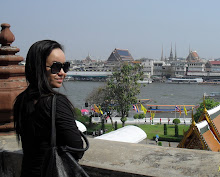The 18th of May. Today is the Feast of SAINT JOHN I, Pope and Martyr and the Birthday of Blessed JOHN PAUL II! Please pray for us! "Totus tuus ego sum, et omnia mea tua sunt" (I am all yours, and all that I have is yours).
Karol Józef Wojtyła, known as John Paul II since his October 1978 election to the papacy, was born in the Polish town of Wadowice, a small city 50 kilometers from Krakow, on May 18, 1920. He was t he youngest of three children born to Karol Wojtyła and Emilia Kaczorowska.
1932 and his father, a non-commissioned army officer died in 1941.
by Fr. Franciszek Zak, made his First Holy Communion at age 9 and was confirmed at 18. Upon graduation from Marcin Wadowita high s chool in Wadowice, he enrolled in Krakow's Jagiellonian University in 1938 and in a school for drama.
had to work in a quarry (1940-1944) and then in the Solvay chemical factory to earn his living and to avoid being deported to
clandestine seminary of Krakow, run by Cardinal Adam Stefan Sapieha,
seminary of Krakow, once it had re-opened, and in the faculty of theology of the Jagiellonian University. He was ordained to
under the guidance of the French Dominican, Garrigou-Lagrange. He finished his doctorate in theology in 1948 with a thesis on the subject of faith in the works of St. John of the Cross (Doctrina de fide apud Sanctum
Krakow as well as chaplain to university students. This period lasted until 1951 when he again took up his studies in philosophy and theology. In 1953 he defended a thesis on "evaluation of the possibility of founding a Catholic ethic on the ethical system of Max Scheler" at Lublin Catholic University. Later he became professor of moral theology and social ethics in the major seminary of Krakow and in the
of Krakow by Pope Pius XII, and was consecrated September 28, 1958,
Pope Paul VI, who made him a cardinal June 26, 1967 with the title of S. Cesareo in Palatio of the order of deacons, later elevated pro illa vice
made an important contribution to drafting the Constitution Gaudium et spes,
he took the name of John Paul II. On 22 October, the Lord's Day, he solemnly inaugurated his Petrine ministry as the 263rd successor to the Apostle.
openness and charity to the entire human race, John Paul II exercised the Petrine ministry with a tireless missionary spirit, dedicating it all his energy. He made 104 pastoral visits outside Italy and 146 within Italy.
People of God and the leaders of Nations. More than 17,600,000 pilgrims participated in the General Audiences held on Wednesdays (more than 1160), not counting other special audiences and religious ceremonies [more than 8 million pilgrims during the Great Jubilee of the Year 2000 alone], and the millions of faithful he met during pastoral visits in Italy and throughout the world. We must also remember the numerous government personalities he encountered during 38 official visits, 738 audiences and meetings held with Heads of State,
The 19 WYDs celebrated during his pontificate brought together millions of young people from all over the world. At the same time his care for the family was expressed in the World Meetings of Families, which he
representatives of other religions, whom he several times invited to prayer
and celebrated the Great Jubilee of the year 2000 in accordance with the instructions given in the Apostolic Letter Tertio Millennio adveniente. The Church then faced the new epoch, receiving his instructions in the Apostolic Letter Novo Millennio ineunte, in which he indicated to the
focusing on countless examples of holiness as an incentive for the people of our time. He celebrated 147 beatification ceremonies during which he proclaimed 1,338 Blesseds; and 51 canonizations for a total of 482
(plus one in pectore) in 9 consistories. He also called six full meetings
General Assemblies (1980, 1983, 1987, 1990, 1994 and 2001), one Extraordinary General Assembly (1985) and eight Special
light of Tradition as authoritatively interpreted by the Second Vatican Council. He also reformed the Eastern and Western Codes of Canon Law,
"Crossing the Threshold of Hope" (October 1994), "Gift and Mystery, on the fiftieth anniversary of my ordination as priest" (November 1996), "Roman Triptych" poetic meditations (March 2003), "Arise, Let us Be Going"
while Saturday was drawing to a close and the Lord's Day was already beginning, the Octave of Easter and Divine Mercy Sunday, the Church's
more than three million pilgrims came to Rome to pay homage to the mortal remains of the Pope. Some of them queued up to 24 hours to
normal five-year waiting period before beginning the cause of beatification and canonization would be waived for John Paul II. The cause was officially opened by Cardinal Camillo Ruini, vicar general for the diocese of Rome, on June 28 2005. |


























No comments:
Post a Comment